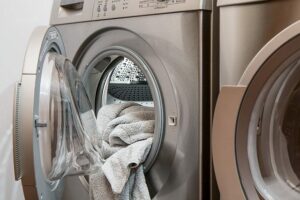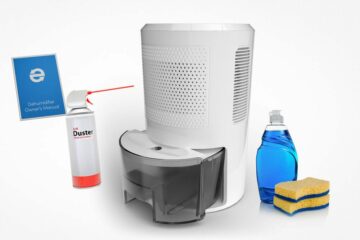For people that live in the south dealing with humidity is a way of life. However, for those of us not accustomed to it learning how to deal with humidity may be uncomfortable and bothersome.
During the summer months, the air can become muggy and sticky making it uncomfortable to be outdoors for long periods of time. However, if you have an excess of moisture inside your home that feeling may still be present when you’re indoors.
Do you live in a humid climate? Some states are more susceptible to humidity than others.
States With The Moist Humidity
According to the Forbes article “Oh The Humidity. Which State Is The Most Humid,” a dew point over 75ׄ°F is considered very oppressive. It’s the amount of moisture that makes you sweat even at night without even moving. A dew point over 70°F is very moist; it’s like walking outside and getting drenched even though it’s not raining. In the southeast half of the U.S. during the summer months, this is very common. A dew point over 60°F is where it starts to “feel humid.” Dew points under 60°F generally feel comfortable and dew points under 30°F feel notably arid, like in Arizona and Nevada.
In that same article, they list the top humid states. The top 10 are (by dew point):
- Hawaii
- Florida
- Louisiana
- Mississippi
- Alabama
- Texas
- Georgia
- South Carolina
- Arkansas
- North Carolina

People living in these states, more than the other 40, need to come up with ways to deal with humidity in order to avoid water damage in their homes. It should also come as no surprise that Alaska came in at #50 with the least amount of humidity, although I’m not sure the snow, freezing temperatures, and endless nights make up for it.
How To Deal With Humidity

They say that living in a home with high ceilings is a good way to deal with humid climates, which is all well and good if you’re building a home from scratch, however, that tidbit of information does nothing for you if you want an immediate fix. Luckily, there are still ways for the rest of us to survive during the high-temperature months without completely uprooting our lives. Check out these tips for living in a humid climate.
1. Keep Your Windows Open (sparingly)
It may seem counterintuitive to open your windows on a hot day, but you actually want to let the air circulate through your home to avoid increasing humidity levels. Stagnant air can also make humidity feel worse as there is no release of air. You may also consider investing in a ceiling or portable fan. Increasing airflow is good but leaving windows open for too long, can potentially increase indoor moisture. Use caution on this step!
2. Brush Up on Your Gardening Skills
Studies show that a home with several house plants contains lower humidity levels than other homes. This is because plants extract many of their nutrients from the moisture in the air. Consider such plants as Boston Ferns or small cacti plants.
3. Flooring Options
Carpeting holds onto moisture, increasing the temperature and humidity in your home. Try using stone tile flooring in high-humidity areas such as the kitchen and bathrooms. Ceramic tile is also extremely waterproof and moisture-resistant.
4. Don’t Dry Your Laundry

When you run your dryer, the exhaust fumes increase your home’s humidity. Many people avoid using their dryer by hanging their clothes upon a laundry trestle, but this may actually contribute to your home’s humidity levels as well. Hang your clothes outside to keep your laundry room cooler.
5. Invest in a Dehumidifier
Whether you live in New York, Florida, or any other humid state, a mini dehumidifier is a must-have. Choose from a variety of units, including dampness protection models, odor eliminators, high capacity, and even home value pack dehumidifiers.
Tackle Your Indoor Humidity with Eva-Dry
Living in a humid climate is not just annoying, but can lead to health complications.
Eva-Dry dehumidifiers provide a safe and effective way to reduce moisture and musty odors all over your house around the clock. Place them in the areas that need them the most like under the kitchen sink, in your bathroom, closet, or bedroom. It absorbs the excess moisture into desiccant beads without the use of cords or batteries. It is silent as well as non-toxic.
Once the dehumidifier reaches max capacity just plug it into renew and in 8-10 hours it’ll be good as new.
To learn more about how to deal with the humidity using dehumidifiers, contact us today or check out our available units that are perfect for your home. Improving your air quality is just a click away.




[…] Finally, the climate where you live will also affect how long your interior paint lasts. If you live in an area with high humidity, your paint is going to fade and wear out faster than if you live in a drier climate. This is because moisture causes paints to deteriorate and lose their color. So, if you want your paint job to last, make sure you live in a climate that isn’t too humid! […]